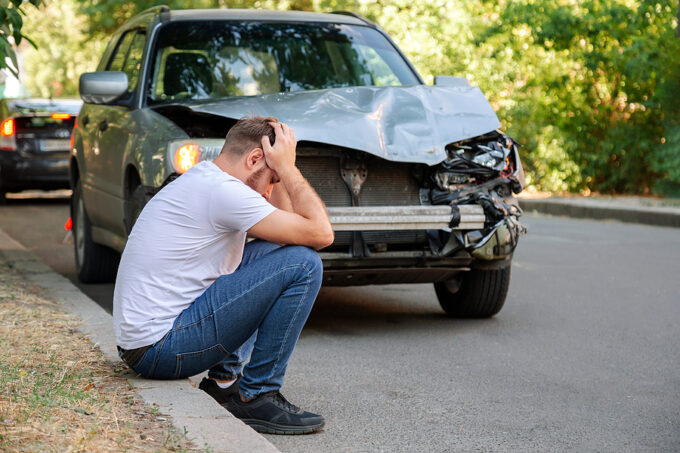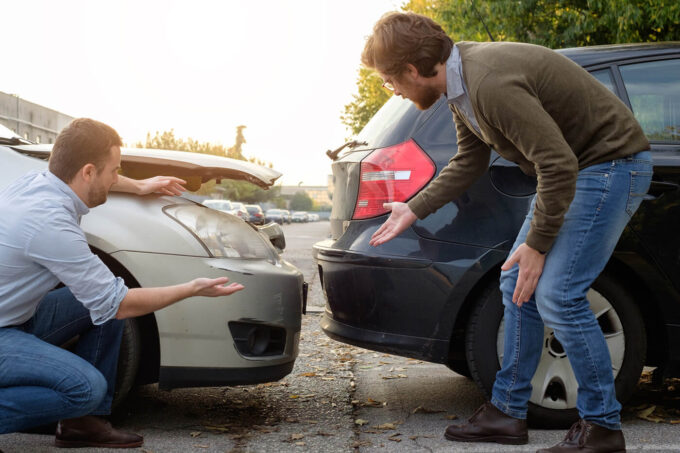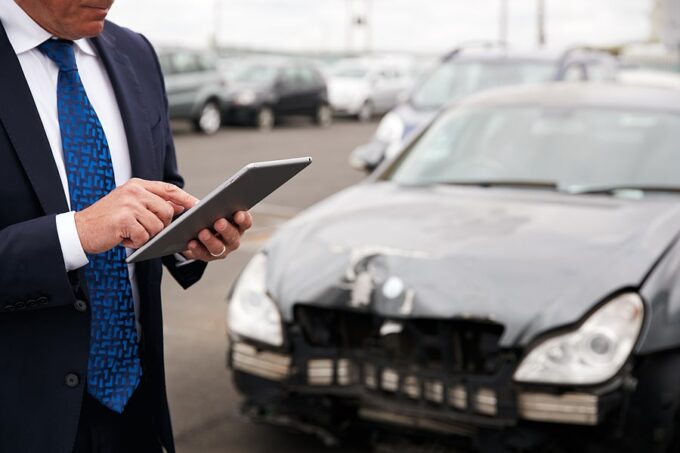Accidents happen, and when they do, it’s crucial for vehicle owners to document the damage accurately and comprehensively. A vehicle damage report serves as a crucial piece of evidence when dealing with insurance claims and repair processes. Whether it’s a minor fender bender or a major collision, crafting a well-structured and detailed report can make a significant difference in ensuring a fair resolution.
Gathering Essential Information: Vehicle Details, Incident Description, and Date

Source: sandlawllc.com
The first step in creating a thorough damage report is to gather essential information about the vehicle and the incident. Start by recording accurate details such as the make, model, and license plate number of the vehicle. Additionally, note down the incident date, time, and location. These specifics will provide a clear timeline and establish the context for the report.
Next, provide a detailed description of the incident itself. Include factors such as the weather conditions, road conditions, and any other relevant details. This information will help paint a clear picture of the circumstances surrounding the damage and assist in the overall assessment of the situation.
Documenting Visible Damage: Exterior and Interior Assessment
A crucial aspect of a comprehensive damage report is a thorough examination of both the exterior and interior of the vehicle. Begin by inspecting the exterior for any visible damage, such as dents, scratches, or broken lights. Take note of the location, size, and severity of each issue. Remember to include a clear description of the damage in your report.
Moving to the interior, carefully examine the seats, dashboard, and any other affected areas. Look for signs of impact, such as deployed airbags or broken glass. Ensure you document any interior damage accurately and include it in your vehicle damage report. The more detailed and specific you are in your observations, the more useful the report will be for insurance purposes.
Taking Detailed Photographs: Angles, Close-ups, and Overall Shots

Source: experian.com
A picture is worth a thousand words, and this rings especially true when it comes to creating a comprehensive vehicle damage report. Capturing detailed photographs is an essential step in providing visual evidence. When taking photos, consider the following:
– Angles: Take photos from multiple angles to capture the full extent of the damage. This includes shots from the front, back, sides, and any other relevant perspectives.
– Close-ups: Zoom in to capture close-up shots of specific areas of damage. This will help highlight the severity and provide a clear visual record.
– Overall shots: Capture wide-angle shots of the entire vehicle, including both sides. These shots will help establish the condition of the vehicle before repairs.
Ensure that the photographs are well-lit and clear, allowing for easy identification of the damage. Remember to organize and label the images accordingly, linking them to the relevant sections of your report.
Including Witness Statements and Contact Information, if Available
In some cases, witnesses may be present during the incident, providing valuable insights and additional evidence. If there were witnesses to the accident, it’s crucial to include their statements in your report. Speak with them and gather their contact information, including names and phone numbers. Ensure that you document their statements accurately and include them as supporting evidence in your report.
Witness statements can provide an unbiased account of the incident, offering an outside perspective on what transpired. Including this information adds credibility to your report and strengthens your case during the claims process. Remember to obtain the consent of the witnesses to use their statements in your report.
Identifying Mechanical Issues: Engine, Suspension, and Electrical Systems
When assessing the damage to your vehicle, it’s important to consider not only the visible exterior damage but also potential mechanical issues. Inspect the engine, suspension, and electrical systems for any signs of damage or malfunction. Look for leaks, loose or damaged components, or any abnormal sounds or vibrations.
If you are not familiar with the technical aspects of your vehicle, it’s advisable to have a professional mechanic inspect it thoroughly. Their expertise will help identify any hidden mechanical issues that may have resulted from the accident. Include their findings and recommendations in your report to ensure a comprehensive assessment of the vehicle’s condition.
Evaluating Safety Concerns: Airbags, Seatbelts, and Structural Damage

Source: forbes.com
Safety should always be a top priority when assessing vehicle damage. Take extra care to inspect safety features such as airbags and seatbelts for any signs of deployment or damage. Even if they appear unaffected, it’s crucial to have them inspected by a certified technician to ensure their proper functionality.
Additionally, assess the vehicle’s structural integrity for any indications of damage. Look for misalignments, bent frames, or any other issues that may compromise the safety of the vehicle. Structural damage can have long-lasting effects on the vehicle’s performance and safety, so it’s essential to include these observations in your report.
Calculating Repair Costs: Obtaining Estimates from Reliable Sources
Determining the repair costs is a vital aspect of the damage report. Seek estimates from reputable repair shops or qualified technicians to assess the extent of the damage and the associated costs. Multiple estimates will provide a more accurate understanding of the expenses involved in restoring your vehicle to its pre-accident condition.
When obtaining estimates, ensure that the repair shops include detailed breakdowns of the costs, including labor, parts, and any additional charges. This information will not only assist in the claims process but also help you make informed decisions about the repair options available.
Finalizing the Report: Organizing, Reviewing, and Submitting to Insurance

Source: autojusticeattorney.com
Once you have gathered all the necessary information and completed your assessment, it’s time to finalize your vehicle report. Take the time to organize the report in a clear and structured manner. Arrange the sections logically, starting with the incident details, followed by the exterior and interior damage assessment, photographs, witness statements, mechanical issues, safety concerns, and repair cost calculations.
Review the report carefully to ensure accuracy and coherence. Double-check all the information, including vehicle details, descriptions of the damage, and witness statements. A well-organized and error-free report enhances its credibility and effectiveness.
After reviewing, submit the report to your insurance company. Follow their specified procedures for document submission, whether it’s through an online portal, email, or physical mail. Keep copies of the report and any supporting documents for your records.
Remember, the vehicle damage report is a crucial tool in the insurance claims process. It provides a comprehensive overview of the incident, the resulting damage, and the estimated repair costs. By following the steps outlined in this guide, you can ensure that your report is thorough, accurate, and persuasive, increasing the likelihood of a fair resolution to your claim.

